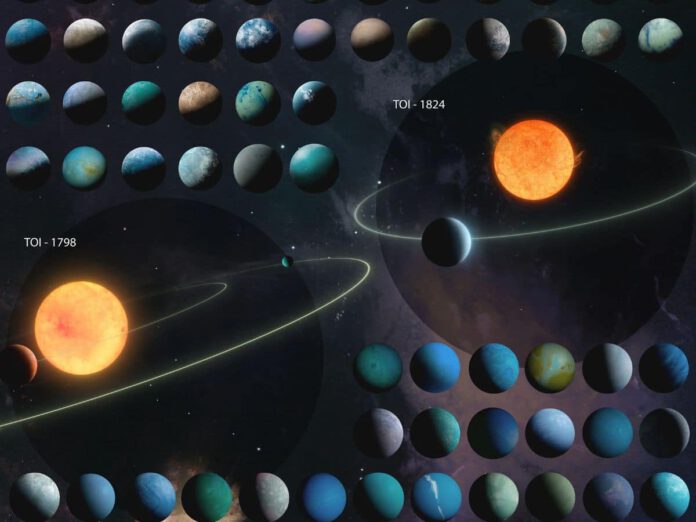
New Exoplanet Catalog Released
The American space agency has released a new catalog featuring 120 confirmed exoplanets and six candidate exoplanets. These extraterrestrial worlds were discovered using the TESS satellite.
Scientist Alex Polanski and an international team of astronomers worked for three years to compile this catalog. In addition to planetary data from TESS, the HIRES instrument from the Keck Observatory was also used. “Thanks to catalogs like these, we can place individual worlds in context with other exoplanets,” says Polanski.
Three Notable Examples
Just like a large family has a few standout members, these 126 new exoplanets also feature some notable examples. Here are three particularly interesting worlds from the catalog:
TOI-1824 b
TOI-1824 b is a sub-Neptune. A sub-Neptune is an exoplanet that is 1.7 to 3.5 times the size of Earth, and hence smaller than Neptune (which is four times the size of our planet). TOI-1824 b is 2.6 times the size of Earth but is remarkably heavy. The exoplanet is almost nineteen times as massive as our home world. Typically, sub-Neptunes are six to twelve times the mass of Earth. It’s possible that TOI-1824 b has an Earth-like core surrounded by a thin atmosphere with a lot of hydrogen.
TOI-1798 c
Then there is TOI-1798 c. This is a super-Earth that orbits its parent star closely. In less than twelve hours, the planet completes a full orbit around the star. This means that a year on this alien world lasts only half an Earth day. “We have already discovered many exoplanets that orbit their parent star faster than Mercury orbits the Sun, but half a day is extremely fast,” Polanski notes. There is no life on this super-Earth, as the planet has likely lost its atmosphere due to its close proximity to the parent star.
TOI-1386 b
Scientists have also found a sub-Saturn, namely TOI-1386 b. In terms of radius and mass, this planet falls somewhere between Neptune and Saturn. This is significant because, to date, scientists have found few sub-Saturns. “This discovery is very important because we don’t know if sub-Saturns are rare or if we just haven’t found them,” says graduate student Michelle Hill, also the lead author of a related paper. “TOI-1386 b is therefore a valuable addition to the database.”
Transit Method
These three – and the other 123 planets in the catalog – were spotted by TESS. This telescope detects planets using the transit method. TESS stares at stars for extended periods, hoping to observe periodic decreases in their brightness, which could indicate the presence of a planet passing between the star and TESS, thereby blocking some of the starlight.
Keck Observations
The Keck telescopes were used to reexamine the planets spotted by TESS. The goal was to determine the masses of the planets using Keck. Knowing the radius, one can subsequently calculate density. “The combination of these measurements tells us what the planets are made of and how they formed,” explains researcher Stephen Kane. To gather this information, scientists examined the movements of the parent stars of the candidate planets. When a planet orbits a star, it causes a wobbling motion of the star, making its relative speed compared to Earth fluctuate. Such a wobbling star can not only reveal the presence of a planet but also determine its mass.
The research, which took approximately three years, has resulted in an impressive catalog of 126 planets discovered by TESS and further defined using Keck. It is a beautiful result and a precursor to more discoveries. “The TESS mission alone has already led to the discovery of thousands of unconfirmed planets,” says researcher Ian Crossfield. Given the time and resources, astronomers can examine these candidates more closely, potentially expanding this catalog significantly. This will provide an increasingly clearer picture of the planets and systems beyond our solar system and highlight the unique nature of our own planet and solar system.











